News
We will be a company that connects the world as one.

News Letter
Thermal IP camera development trends
2024.10.07 09:47
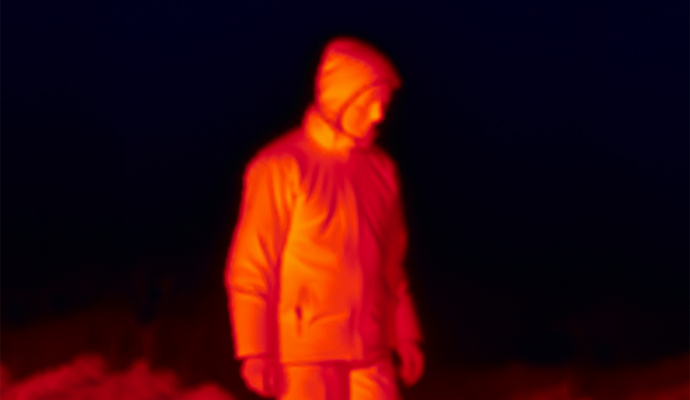
“Several companies are already developing thermal IP cameras using Seyeon tech Flexwatch module”
As industrial structures become more advanced, energy-intensive industrial facilities and products using high-density energy are gradually increasing. Closely, this includes smartphones and electric vehicles, and broadly, this includes numerous spaces where large-scale and mechanized operations are underway, such as automated factories, data centers, and power plants. In this way, society is gradually shifting toward concentrating more energy into close, limited spaces. If we overlook this trend, we often encounter news reports of fires and explosions.
Recently, the IP camera industry has been paying close attention to thermal imaging cameras in response to the above trend. The demand for High-density energy products and facilities is expected to continue growing, and video security surveillance devices are suitable for extensive management. By adding thermal imaging cameras that can quickly detect energy changes in the form of ‘temperature’, it will be possible to build a more secure and more robust security solution.
Seyeon Tech is also actively supporting various customers in developing thermal imaging cameras based on its own Flexwatch IP camera modules. With over 20 years of technological expertise, our in-house R&D center provides dual support for both SW and HW, collaborating with several companies, and some partners have already completed development and are in the process of obtaining TTA certification and selling finished products. Therefore, we would like to look into thermal imaging IP cameras, which are expected to become an important issue in the future, and briefly introduce the development trends.
Table of Contents:
1. The Unique Characteristics of Thermal Imaging in terms of ‘Heat’ and ‘Temperature’
2. How is Thermal Imaging Data Outputted?
3. Supported Modules
4. Others
Outline
1. The Unique Characteristics of Thermal Imaging in terms of ‘Heat’ and ‘Temperature’
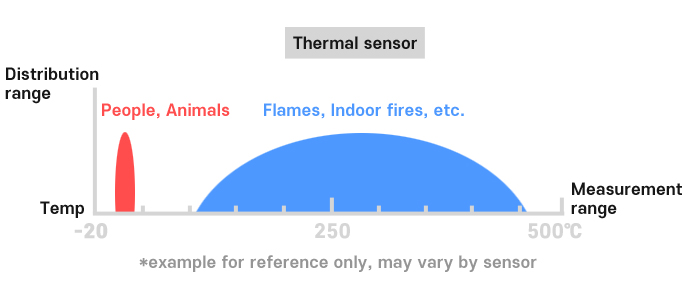
The key element of a standard IP camera is "light." Many components, such as the lens, IR cut filter, image sensor, and LED, are designed to function in a way that enhances the capture of visible light. Thermal imaging cameras, however, are different. All objects with a temperature emit invisible infrared energy (heat). A thermal imaging camera is a device that visualizes this by analyzing subtle differences in infrared energy (heat) in stages. Since it does not operate in the visible light spectrum, images are typically represented in black and white, while colored thermal images are produced through post-processing by the camera.
Thermal imaging sensors for IP cameras that cover a wide temperature range can typically measure temperatures from around -20°C to 500°C. (With filters, even higher ranges are possible, though specifications may vary depending on the sensor.) However, visualizing these measured values as images presents a different challenge, separate from having a wide measurement range.
As you can see from the graph above, the temperature distribution range is different depending on the subject, such as people, animals, flames, and fire. There is no overlapping part. If a person and a flame are in the same space, the temperature difference between the two subjects will be very extreme. Thermal imaging cameras show the subtle differences in the distribution of infrared energy (heat) in the visualization process by spreading them out widely. Therefore, the temperature characteristics are different for each subject in order to visualize the wide temperature difference as above. Therefore, it is important to think about what the subject is to be photographed, what the ‘purpose’ of the thermal image will be used for, and design a camera that complements this by considering the camera characteristics.
2. How is Thermal Imaging Data Outputted
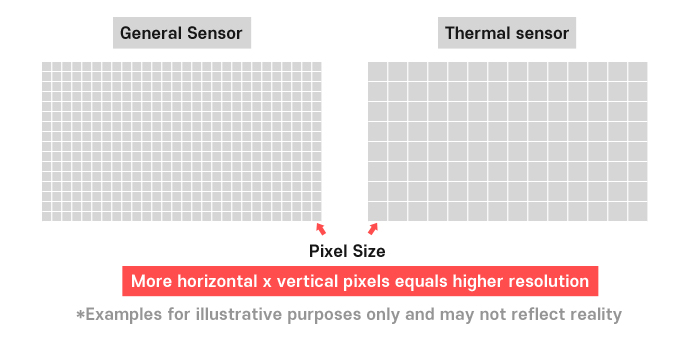
As mentioned earlier, thermal imaging cameras need to sensitively detect subtle infrared wavelengths. Because of this, the pixels that make up the sensor must be larger than those in a standard image sensor. When the pixels are larger, the density of pixels per sensor area decreases, resulting in lower resolution.
The resolutions commonly used in thermal imaging cameras are 320x240 and 640x480, with 640x480 being considered relatively high resolution. To output temperature data along with the thermal image, the following methods can be used:
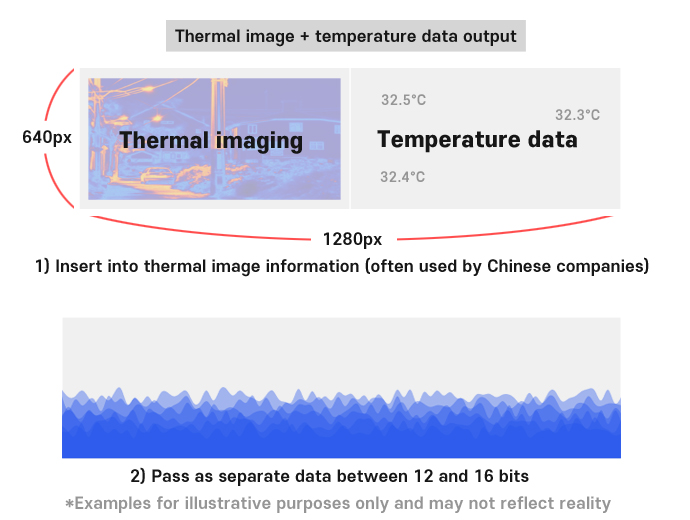
Such data is output through interfaces like MIPI, LVDS, BT656, and BT1120. While interfaces such as BT656 are available, it is an older standard, and its use has been declining recently.
3. Supported Module
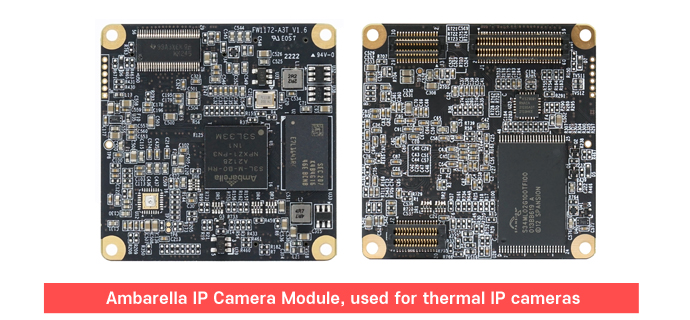
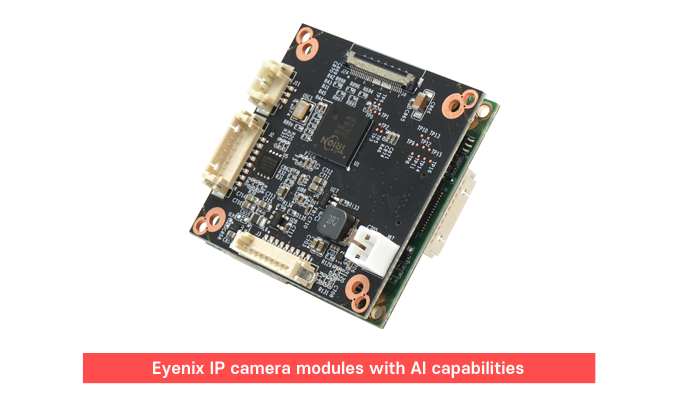
IP camera modules based on Ambarella SoCs are products with consistent customer demand. They offer stable performance and software support, enabling collaboration with several thermal imaging camera companies. Some of these partners are currently undergoing TTA certification. (As of March 2024, thermal imaging cameras are also included in the scope of TTA certification.)
IP camera modules based on Eyenix SoCs were released relatively recently and offer versatile applications due to their strong performance. They support MIPI, LVDS, BT656, and BT1120 interfaces, allowing for the development of more optimized thermal imaging cameras through collaboration with Flexwatch R&D center on both S/W and H/W.
4. Others


Seyeon Tech is a specialized manufacturer of IP camera modules with over 20 years of history, providing extensive technical expertise in IP cameras based on solid middleware. We produce a diverse range of products, including rolling shutter and global shutter sensor families, as well as IP-based camera modules and finished products in large quantities.
Recently, we have been expanding customer participation by providing an "Open AI SDK," allowing customers to develop their own AI IP cameras. We are continuously enhancing convenience through product compatibility, TTA and National Intelligence Service security certifications, and road construction protocols. Additionally, Seyeon Tech IP cameras comply with NDAA regulations, enabling us to introduce our products to the U.S. and European IP camera markets without concerns. We invite you to join us in leading product development with Seyeon Tech's IP camera modules, which are continuously advancing through dedicated research.




 이전글
이전글
 다음글
다음글


